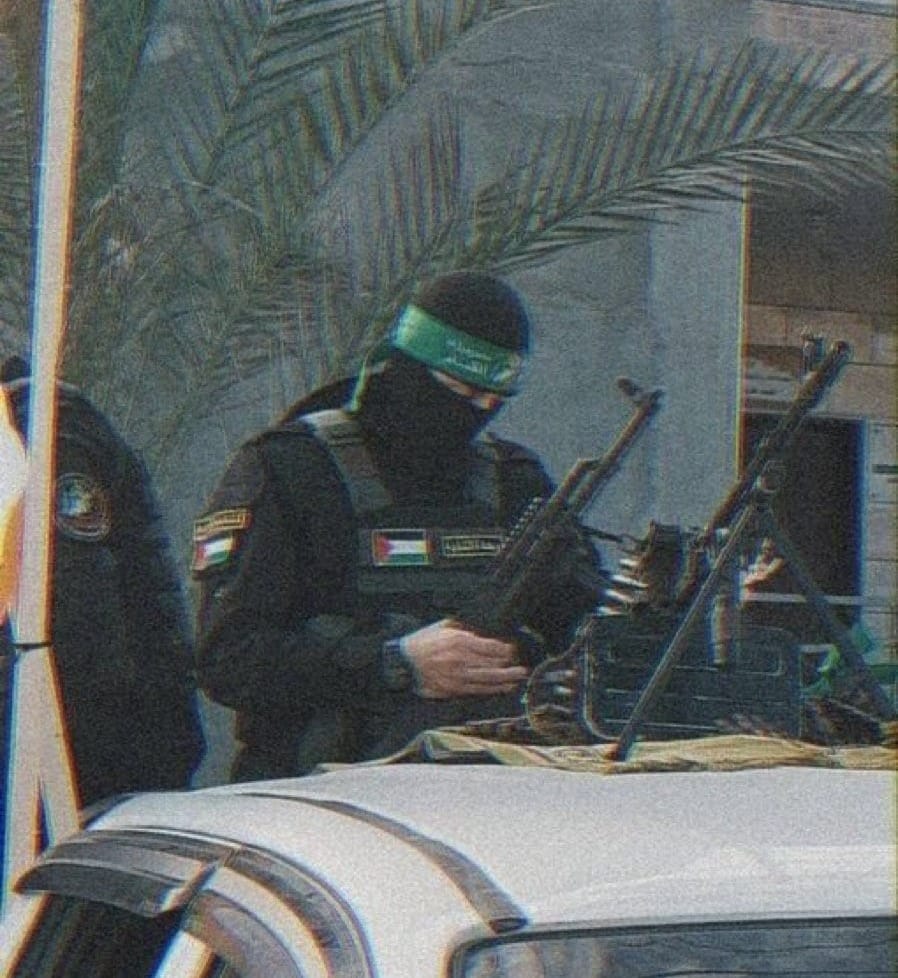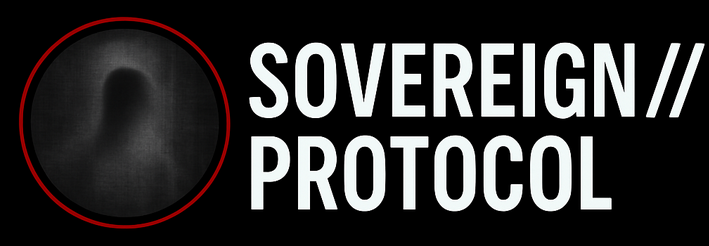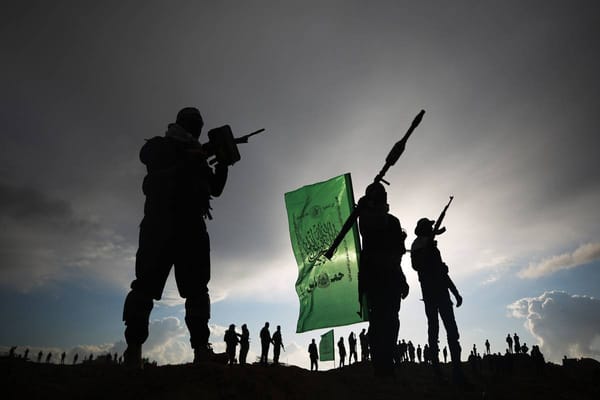The Continuity of Shadows: Cells, Prisons, and the Crafting of Endurance in the Struggle

The story begins in Jerusalem, where social divisions and assumptions of safety allowed resistance cells to germinate in areas dismissed by Israeli intelligence as “non-Islamic” or politically dormant. From this unlikely ground, figures like Mohiyedine Sharif, Hamas’s second-in-command, saw the strategic potential of embedding militant organisation directly inside the city. By the early 1990s, clandestine cells had been formed, linking Jerusalem not only to its own neighbourhood networks but to Bethlehem, Hebron, and eventually Gaza. This was not a story of isolated actors but of a deliberately interwoven lattice, with men like Muhammad Aziz Rushdi (“Abu al-Hajj Barakat”) filling gaps in leadership after major arrests, and Muhammad Deif stepping into a central role as the connective tissue between fragmented fronts.
The operational logic that emerged in this era was one of persistence under scarcity. Weapons were ancient, sometimes dating back decades, and homemade explosives required weeks of painstaking work. Yet it was precisely this lack that drove innovation. Operations began with small ambushes and escalated toward bolder strikes on intelligence officers and settlers. Israeli media often erased or downplayed the scale of these attacks, refusing to acknowledge losses, but inside the movement the proof of concept was clear: armed resistance could be staged and repeated even in hostile terrain. The psychological element became as important as the kinetic. If conventional firepower was insufficient, the answer lay in planting fear, creating uncertainty, and ensuring that no garrison or checkpoint could feel secure. Out of this logic came the first martyrdom operations, initially controversial, later accepted as a method to invert asymmetry into deterrence.
The escalation in 1993 at French Hill marked a turning point: not only was the operation a practical strike, it was a declaration of doctrine. Capturing and killing soldiers became the instrument for bargaining over prisoners, while martyrdom missions were framed as a tool of political leverage. During the Al-Aqsa Intifada, this methodology expanded, embedding itself into the DNA of the movement. What had begun as improvisation under duress crystallized into a strategic tradition. Every action required mapping not just the point of attack but the path of withdrawal, an obsession with survivability that reflected the long learning curve of trial and error. Resistance leaders drew diagrams, drilled escape routes, and treated every street corner as both a battlefield and an exit corridor. This systematic planning culminated in successful raids like the one in Hebron, where fighters killed intelligence officers and escaped through pre-drawn routes, showing that preparation could outmatch superior firepower.
From prison, another layer of development unfolded. Muhammad Deif corresponded with detainees, offering both inspiration and technical insight. Figures like Nidal Farhat pioneered the first crude Qassam rockets and even experimental drones, making the prison walls as much a workshop of doctrine as the safehouses outside. The effect was cumulative: networks that survived torture and isolation emerged hardened, infused with technical literacy, and committed to scaling the fight. Prison became a crucible for leadership, and names like Abu Ibrahim Yahya Sinwar rose as organisers, teachers, and custodians of internal security. He insisted that resistance required not just weapons but a disciplined base shielded from infiltration. Through translation of Hebrew texts, teaching of Qur’an, and clandestine seminars, he turned incarceration into a political academy, equipping cadres with both ideological clarity and tactical acumen.
The thread of continuity lies in scarcity transmuted into strength. Scarcity of weapons forced improvisation. Scarcity of space forced underground networks and psychological leverage. Scarcity of leadership, after assassinations and arrests, forced younger cadres into accelerated maturity. But each gap became a catalyst. The lesson was simple: resistance could not rely on material abundance; it had to be self-reinforcing, drawing legitimacy from sacrifice, and ensuring that every strike, whether or not acknowledged by the occupier, added to the invisible ledger of persistence. This ethos extended into broader strategy: build ties to allies abroad, ensure redundancy of networks, and preserve the organisational base even in exile or imprisonment. When Sinwar, Deif, and others emerged from prison or concealment, they carried forward not just operational experience but the weight of decades of collective endurance.
The testimony also reveals how martyrdom was reframed inside the movement, not as a reckless act, but as a deliberate instrument of warfare under asymmetric conditions. Fighters argued that if weapons were scarce and explosives limited, the human body itself could become the delivery system. Leaders like Deif listened, questioned, and only then authorised, embedding the process within collective deliberation rather than spontaneous desperation. This evolution marked the movement’s transition from small cells to a structured military wing capable of combining guerrilla tactics, martyrdom operations, and eventually advanced weapon development into a coherent arsenal. By the mid-1990s, martyrdom missions had become institutionalised, feeding directly into the brigades’ reputation and their capacity to negotiate with the occupier through fear and disruption.
At the heart of all this stands the paradox of visibility and invisibility. For years, the names of men like Deif and Sinwar circulated as legends, their physical presence elusive, their influence unmistakable. When Deif corresponded from underground, or when Sinwar smuggled translated intelligence texts into prison, their leadership extended beyond geography. They were absent bodies made present through narrative, instruction, and discipline. This is why their eventual martyrdoms or survivals carried such symbolic weight: they embodied continuity. The organisation was never just about weapons or cells, it was about sustaining a generational pipeline where one fallen leader was instantly replaced by another trained in the same crucible.
By the early 2000s, the brigades’ capacity had expanded into both Gaza and the West Bank. Despite assassinations and arrests, the organisational base had grown so broad that replenishment was constant. Between 1987 and 2004, over half a million Palestinians, an astonishing 40% of the population, had cycled through Israeli prisons, many of them linked to Hamas. This staggering churn of detention turned incarceration itself into a recruitment mechanism. Every release meant new cadres seasoned by struggle, carrying with them networks, knowledge, and hardened identities. The limiting factor was never manpower; it was always weapons. The estimate that 100,000 fighters could be fielded if arms were available captures the depth of commitment. The battlefield was crowded with willpower, waiting only for matériel.
The closing insight ties the personal to the collective. Figures like Abu Ibrahim embodied both humility and ferocity: feeding fellow prisoners from his own pocket, translating enemy texts, then later negotiating with regional allies to secure arms and support. His death, bloody and on the frontline, symbolized the dual legacy of sacrifice and generational instruction. He left behind not just his own record but a living model for others. The suggestion that today’s recruits, shaped by his example, may form the liberation generation is not hyperbole but a logical continuation of a trajectory decades in the making. What emerges from the testimony is not nostalgia but an anatomy of endurance: how scarcity became doctrine, how prisons became universities, how martyrdom became policy, and how each generation absorbed the lessons of the last to fight on with greater clarity.
This is the architecture of resistance as memory: a system that converts every absence into presence, every weakness into a new form of strength, and every fallen leader into a foundation stone for those who follow.


